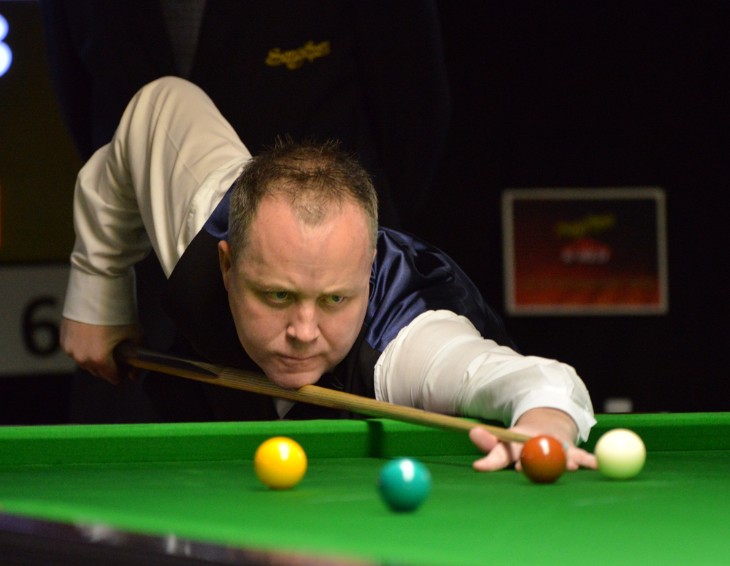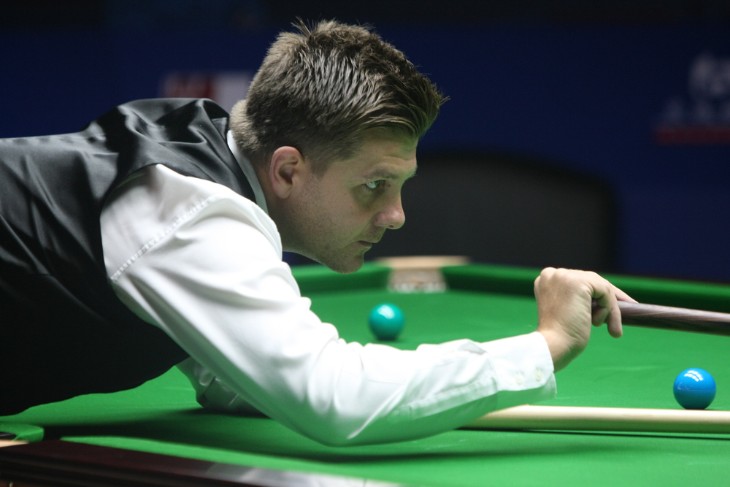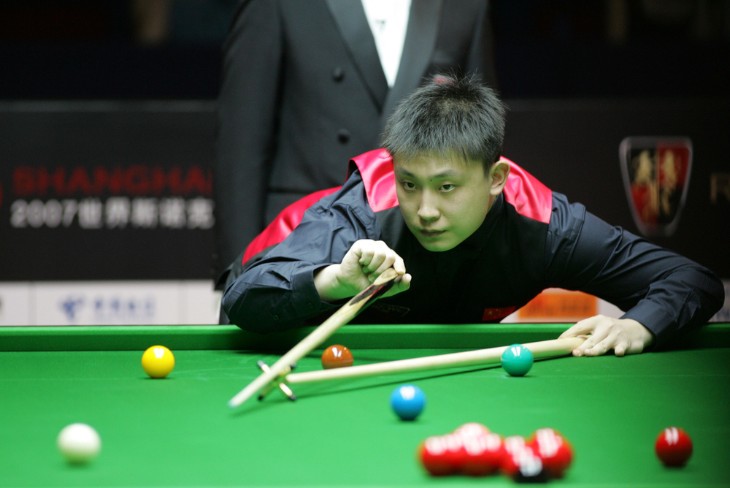This article will examine snooker's significant role in influencing other cue sports, focusing on its technical skill, innovative aspects, and strategic complexity. Snooker has raised playing standards and crossed cultural boundaries, uniting people worldwide with a love for cue sports. We will explore how snooker has contributed to the development of these games, highlighting its lasting legacy in how we approach these table sports.
Technical Aspects and Skills in Snooker
Fundamental rules, technical skills, and strategic depth of snooker have established a high standard of excellence in cue sports. Players who excel in snooker often possess exceptional ball control, spin mastery, and positional play skills, making snooker a sport that demands both physical precision and mental acuity. These skills have undoubtedly influenced and set a benchmark for players in other cue sports as well.
Fundamental Rules and Gameplay of Snooker:
- Objective: In Snooker, the primary objective is for players to score points by potting balls in a specific order. The game is typically played between two players or two teams, with each player aiming to pot the balls legally and accumulate points.
- Balls: Snooker is played with 21 coloured balls (15 red balls worth 1 point each and six coloured balls worth varying points) and one white cue ball.
- Scoring: Players score points by potting red balls followed by coloured balls. Each red ball potted earns 1 point, whereas coloured balls have different point values (yellow: 2 points, green: 3 points, brown: 4 points, blue: 5 points, pink: 6 points, black: 7 points).
- Turns and Fouls: A player continues their turn as long as they pot a ball legally. If a player commits a foul (e.g., potting the cue ball, not hitting any ball, or failing to hit the correct ball first), their opponent receives points and the chance to play.
- Winning the Game: The player with the most points at the end of the game wins. A snooker frame typically consists of a predetermined number of frames, and the player or team with the most frames won is declared the overall winner.
Technical Skills Required in Snooker:
- Ball Control: Players need precise control over the cue ball to pot the intended ball. This involves mastering different strokes and gauging the right amount of force to apply, ensuring accuracy in potting.
- Spin (English): Applying spin to the cue ball allows players to control its trajectory after hitting another ball. Topspin, backspin, and side spin (left or right English) are essential techniques for position play and controlling the path of the cue ball after contact.
- Positional Play: Snooker is not just about potting balls but also about setting up the next shot. Skilled players plan ahead, considering the position of the cue ball after each shot to ensure they have a clear shot at the next ball. Positional play involves understanding angles, spin, and rebound patterns.
Setting a Standard for Excellence in Cue Sports:
- Precision and Accuracy: Snooker demands an exceptionally high level of precision and accuracy. Players must consistently pot balls of various colours, demonstrating their ability to control both the cue ball and the object ball.
- Strategic Thinking: Snooker players need to think several shots ahead, considering the positions of the balls on the table, the potential break-building opportunities, and the safety play strategies. This strategic thinking sets a standard for cue sports players in terms of planning and executing sequences of shots.
- Mental Focus and Patience: Snooker matches can be lengthy and require intense concentration. Players must remain composed, patient, and mentally focused throughout the game, showcasing mental resilience and control under pressure.

Adaptation of Snooker Techniques in Pool and Billiards
- Precision Potting: One of the fundamental skills in snooker is the ability to pot balls accurately. This precision potting technique has been integrated into pool and billiards, emphasizing the importance of accuracy in pocketing balls. Players in pool and billiards often use snooker-inspired potting techniques to sink balls into pockets with minimal margin for error.
- Safety Play: Safety play in snooker involves strategically playing a shot to leave the opponent without a clear potting opportunity. This defensive strategy has been adapted into pool and billiards, where players use safety play techniques to control the table, limit their opponent's options, and create difficult positions for their opponents to play from.
Examples of Snooker Skills Showcased in Other Cue Sports:
- Efren Reyes (Pool): Efren Reyes, a legendary Filipino pool player, is known for his exceptional cue ball control and precision potting skills. His ability to position the cue ball strategically and pocket difficult shots is reminiscent of snooker techniques. Reyes often incorporates snooker-inspired safety play into his matches, forcing opponents into challenging situations.
- Jeanette Lee (Pool): Jeanette Lee, also known as "The Black Widow," is a prominent American pool player. She is renowned for her potting accuracy and ball control. Lee's precise potting techniques and strategic play have been influenced by snooker, allowing her to dominate in the pool world.
- Thorsten Hohmann (Billiards): Thorsten Hohmann, a world-class German three-cushion billiards player, exhibits exceptional cue ball control and positional play. His ability to calculate angles and control the cue ball's path is reminiscent of snooker players' finesse. Hohmann's strategic approach to billiards is influenced by snooker, allowing him to consistently outmanoeuvre opponents.
Impact of Snooker Techniques on Gameplay and Strategies:
- Enhanced Precision and Control: The integration of snooker techniques in pool and billiards has raised the overall standard of precision and control in these cue sports. Players now focus on mastering accurate potting and controlling the cue ball to set up the next shot, leading to a more strategic and challenging gameplay experience.
- Strategic Depth: Snooker-inspired safety play techniques have added layers of strategic depth to pool and billiards. Players employ defensive strategies to gain an advantage, creating a balance between offensive potting and defensive positioning. This increased complexity has made the games more intriguing for both players and spectators.
- Global Exchange of Skills: The adaptation of snooker techniques in pool and billiards has facilitated a global exchange of skills and strategies. Players from different cue sports backgrounds often learn from one another, leading to the evolution of gameplay techniques and contributing to the overall growth and competitiveness of cue sports worldwide.
Cue Sports Innovation and Strategy
The innovations driven by snooker in cue design, ball manufacturing, and table construction, combined with strategic elements such as break building and pattern play, have elevated the overall competitive nature of cue sports. These advancements have contributed to a diverse and dynamic playing environment, encouraging players to continuously evolve their skills and strategies, and making cue sports a thrilling and ever-evolving spectacle for players and fans alike.
Cue Sports Innovation:
- Cues: Snooker, as one of the most refined cue sports, has driven innovations in cue design and technology. Cue makers have continuously experimented with materials, weight distribution, and shaft construction to create cues that offer better control, balance, and feedback to players. Snooker cues have inspired similar advancements in cues used for pool and billiards, leading to a variety of cues tailored to different player preferences and playing styles.
- Balls: The materials and manufacturing techniques used for snooker balls have influenced the production of balls in other cue sports. High-quality phenolic resin balls, initially developed for snooker, are now widely used in pool and billiards. These balls provide superior durability, consistent weight, and precise rebound characteristics, enhancing the overall playing experience.
- Tables: Snooker tables have undergone innovations in terms of construction, cushion materials, and pocket design. These improvements have led to the creation of high-quality, standardized tables not only for snooker but also for pool and billiards. Standardization ensures a consistent playing surface, allowing players to focus on skill and strategy rather than adjusting to different table conditions.
Strategic Elements of Snooker and Their Influence:
- Break Building: Snooker players excel in break building, which involves potting multiple balls in a sequence. This strategic element emphasizes controlled potting, precise position play, and planning ahead for subsequent shots. The break-building techniques developed in snooker have influenced players in pool and billiards, encouraging them to think strategically about building runs of pots and controlling the cue ball for the next shot.
- Pattern Play: Snooker requires players to navigate intricate patterns of coloured balls after potting reds. Players must plan their route across the table to pot balls in a specific order, ensuring optimal position for the next shot. Pattern play in snooker demands foresight, precision, and strategic positioning, skills that have permeated into other cue sports. Pool and billiards players now use similar pattern play techniques to clear balls from the table efficiently.
Introduction of New Strategies and Competitive Nature:
- Strategic Diversity: The integration of snooker techniques and strategies into pool and billiards has diversified gameplay. Players have access to a broader range of strategies, allowing them to adapt their style based on the game situation and opponent. This diversity has made cue sports more dynamic and engaging, fostering a healthy competitive environment.
- Enhanced Skill Level: The introduction of new strategies has raised the skill ceiling in cue sports. Players continuously push the boundaries of what is possible, incorporating snooker-inspired techniques into their gameplay. As a result, the overall competitive nature of cue sports has intensified, leading to higher-stakes matches and tournaments. Players must constantly innovate and refine their strategies to stay ahead in the competitive scene.
- Global Exchange of Strategies: With the global popularity of cue sports, players from different cultural backgrounds and cue sports disciplines frequently compete and share strategies. This exchange of ideas has led to the amalgamation of various playing styles, creating a rich tapestry of techniques that enhance the overall competitiveness and excitement of cue sports on the international stage.

Cultural Influence and Popularization
Cue sports, including snooker, pool, and billiards, have significantly influenced and become integrated into various cultures around the world. The cultural impact of these games is visible in social settings, entertainment, and even art. In countries like the United Kingdom, where snooker originated, the sport holds a special place in the hearts of enthusiasts. It has become a part of British pub culture, with snooker tables often found in pubs, providing a recreational space for patrons to enjoy the game. Additionally, snooker tournaments in the UK, such as the World Snooker Championship, are widely followed, and successful players are celebrated as national heroes, further solidifying the sport's cultural significance.
In other parts of the world, cue sports have gained popularity and become deeply rooted in local traditions. In the United States, pool has become a staple in bars and social clubs, offering a recreational pastime for people of all backgrounds. Asian countries, particularly China, have witnessed a surge in snooker's popularity, with a growing number of talented players emerging from the region. The sport's global appeal is also reflected in popular media, including movies, television shows, and literature, where cue sports are often portrayed, making them accessible and relatable to diverse audiences.
Furthermore, the popularization of cue sports has been driven by advancements in media technology. Televised tournaments, online streaming platforms, and video games have brought cue sports into the living rooms of millions, transcending geographical boundaries. This exposure has not only popularized the games but also created a sense of community among fans and players worldwide. Cultural diversity within the cue sports community has fostered mutual respect and appreciation for different playing styles, further enriching the global appeal of these games. Overall, cue sports have become a shared cultural experience, connecting people from various backgrounds and contributing to the tapestry of global sporting heritage.
Summary
The integration of snooker techniques, such as precision potting and safety play, into pool and billiards has elevated the standards of play, emphasizing accuracy, strategic thinking, and adaptability. Snooker's innovative contributions to cue design, ball manufacturing, and table construction have set a benchmark for quality and consistency across cue sports. Additionally, the strategic elements of snooker, such as break-building and pattern play, have added layers of complexity to the gameplay of various cue sports, enhancing the overall competitive nature of these games.
For more information:




.webp)


 (1).webp)




















